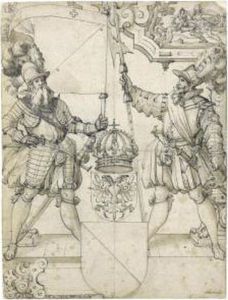Josias Murer Paintings
Josias Murer was a Swiss draughtsman and engraver from the 16th century, primarily known for his detailed urban plans and landscapes. Born in Zürich in 1530, Murer was part of a period where the art of cartography and topographical sketches was evolving, influenced by the burgeoning interest in geography and the development of cities during the Renaissance.
Murer's work is characterized by its precision and attention to the details of urban life, which provide a valuable historical record of the Swiss landscape and urban centers during his lifetime. His most notable contribution to cartography is the 'Plan of Zurich,' a detailed depiction of the city in 1576, which stands as a significant document for historians and art historians alike.
Although not much is known about his training, Murer's work suggests he was well-versed in the techniques of engraving and drafting, which were essential skills for producing maps and urban views. He worked in a period when such skills were in high demand due to the interests of government officials, military strategists, and wealthy patrons who desired accurate representations of territories and properties.
Murer's engravings and plans are also valued for their artistic qualities, reflecting the Renaissance's influence on Swiss art. His representations of buildings, streets, and daily life not only serve as historical documents but also as artworks that capture the essence of Swiss urban environments in the late 16th century.
Josias Murer passed away in 1580, leaving behind a legacy that would be invaluable for future generations. His works are preserved in various collections and continue to be studied for their historical significance and their contribution to the development of topographical representation in art.
